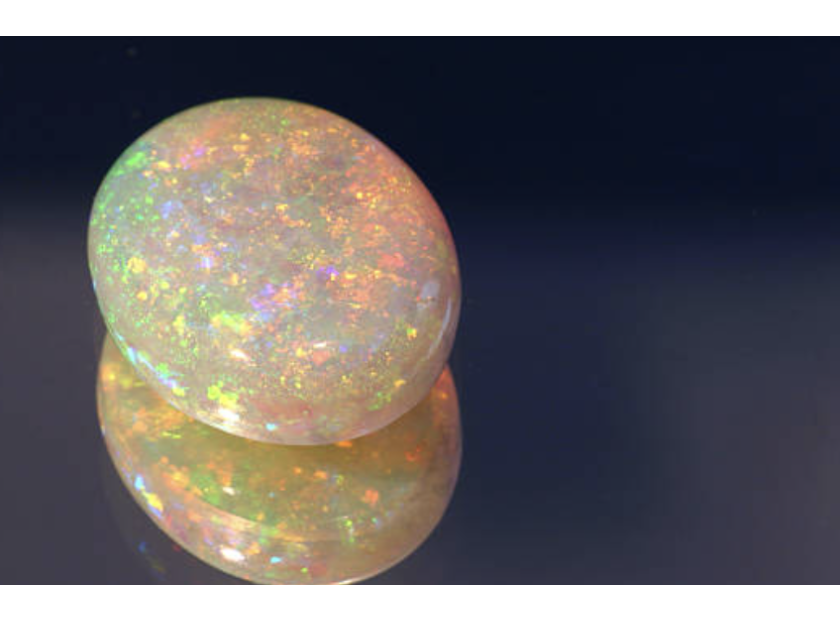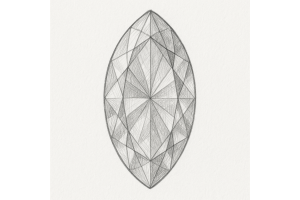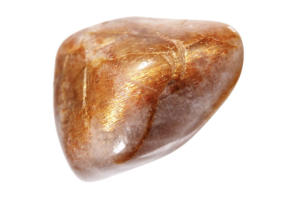GBP
/
GBP
/
Shipping to:
Currency:
How to Tell If an Opal Is Real – A Complete Guide for Buyers
Opals are among the most enchanting gemstones, celebrated for their mesmerising play-of-colour that can captivate any jewellery enthusiast.
However, with their popularity comes the challenge of distinguishing genuine opals from synthetic or imitation counterparts.
Understanding how to identify a real opal is crucial for collectors and buyers alike.
Understanding Opals
Opals are hydrated amorphous forms of silica, containing water within their structure.
This unique composition contributes to their characteristic play-of-colour, where flashes of various hues dance across the stone's surface.
The internal structure of precious opal causes it to diffract light, resulting in this captivating display.
Types of Opals
Natural Opals
Formed over millions of years, these opals are mined from the earth and exhibit a unique play-of-colour.
Synthetic Opals
Lab-created stones that mimic the appearance of natural opals.
They often display a more regular pattern and can sometimes be identified by their uniformity.
Imitation Opals
Made from materials like glass or resin, these lack the complex internal structure of real opals and often have an artificial appearance.
Visual Characteristics of Genuine Opals
Play-of-Colour
Authentic opals display a dynamic play-of-colour that shifts and changes as the stone is moved.
This effect is due to the diffraction of light within the microstructure of the opal.
Pattern and Clarity
Natural opals have unique, non-repetitive patterns.
In contrast, synthetic opals might show a 'lizard skin' or 'chicken wire' pattern under magnification, indicating their man-made origin.
Body Tone
The background colour, or body tone, of an opal can range from dark (black opals) to light (white opals).
Darker body tones often enhance the vibrancy of the play-of-colour.
Physical Tests for Authenticity
Hardness Test
Opals rank between 5.5 and 6.5 on the Mohs scale of hardness.
While they can be scratched by harder substances, they shouldn't be easily scratched by materials of lesser hardness.
Temperature Sensitivity
Genuine opals are sensitive to sudden temperature changes due to their water content.
Imitation opals made of glass or resin may not exhibit this sensitivity.
Weight and Density
Natural opals have a specific density that differs from synthetic or imitation stones.
Holding the opal can sometimes give clues; for instance, resin-based imitations may feel lighter.
Professional Assessment
For a definitive evaluation, it's advisable to consult a certified gemologist.
They can perform advanced tests, such as spectroscopy or specific gravity measurements, to determine the opal's authenticity.
Common Misconceptions
All Opals Are Expensive
While high-quality opals can be valuable, there are also affordable genuine opals available.
Price alone isn't a definitive indicator of authenticity.
Uniform Patterns Indicate Quality
In reality, natural opals have irregular and unique patterns.
Uniformity can sometimes be a sign of synthetic origin.
Tips for Purchasing Opals
Buy from Reputable Dealers
Ensure the seller has a good reputation and provides clear information about the opal's origin and treatment.
For a selection of high-quality gemstone rings, explore gemstone rings.
Request Certification
Ask for a certificate of authenticity or any documentation that verifies the opal's provenance.
Be Cautious of Deals That Seem Too Good to Be True
Extremely low prices can be a red flag for synthetic or imitation stones.
Frequently Asked Questions
Can opals change colour over time?
Opals can lose their play-of-colour if they become dehydrated.
Proper care, such as storing them in a moisture-controlled environment, can help maintain their appearance.
Are doublets and triplets considered real opals?
Doublets and triplets are assembled stones that include a layer of real opal.
While they contain genuine opal, they're not considered solid opals and may be less valuable.
Is it safe to wear opal jewellery daily?
Due to their relative softness and sensitivity to environmental factors, opals are best worn occasionally.
Daily wear can expose them to risks of scratching and dehydration.
How should I clean my opal jewellery?
Clean opals gently with a soft, damp cloth.
Avoid ultrasonic cleaners and harsh chemicals, as they can damage the stone.
Do opals fluoresce under UV light?
Some opals may exhibit fluorescence under UV light, but this isn't a definitive test for authenticity, as both natural and synthetic opals can fluoresce.








